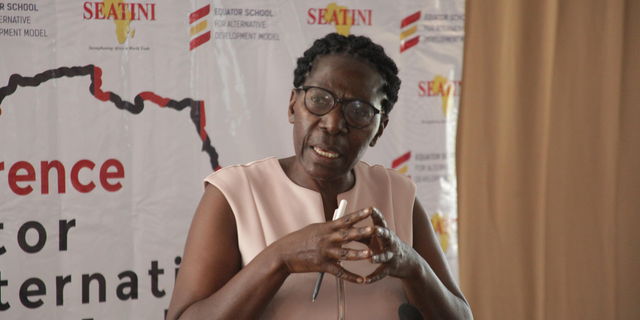New Shs435b project to create 12,000 jobs

Youth in Ogur Sub-county, LIra District, use solar energy to run their bakery. The new Shs435 billion technology project is expected to create 12,000 jobs. PHOTO / BILL OKETCH
What you need to know:
- This centre will act as a platform for technology development through the process industry learning factory model, including common user facilities and shared workspaces for scientists and innovators.
A new project aimed at enhancing the technological and skill base of Ugandans to participate in strategic national infrastructural projects and manufacturing industries is expected to create 12,000 jobs.
The National Science, Technology, Engineering and Innovation Skills Enhancement Project (NSTEI-SEP) is also expected to increase active participation of Ugandans in national infrastructure development initiatives.
The ambitious five-year intervention is to be implemented by the government through the Uganda National Council for Science and Technology (UNCST), with support from the People’s Republic of China.
The entire project will cost Shs435b, of which Shs295b is a loan and the rest from the Government of Uganda.
The UNCST executive secretary, Dr Martin Patrick Ongol, said the project addresses a pressing need to help build Uganda’s science and technology human capital needed to foster its socioeconomic development and poverty reduction agenda.
He explained that the project will enhance the technological and skill base of youth out of school, graduates, craftsmen, technicians, and engineers to participate in strategic national infrastructural projects and manufacturing industries.
“The project will ultimately empower Ugandans with the capacity to design, implement and manage national infrastructure projects while at the same time supporting Ugandan scientists and innovators to commercialise viable research and development outputs,” he said in a statement.
A National Science, Technology and Engineering Innovation Centre (NSTC) will be established at Rwebitete, Kiruhura District, to enhance the technological and innovative base of Ugandans through a flexible factory learning and infrastructure model.
Under the project, a technology innovation and business incubation centre (TIBIC) will be established at Kampala Industrial Business Park, Namanve - Mukono District.
This centre will act as a platform for technology development through the process industry learning factory model, including common user facilities and shared workspaces for scientists and innovators.
Also, a technical service company will be established to provide services strategic to the country’s infrastructural and engineering capacity development.
According to the government, this investment is in line with the Vision 2040 agenda of setting up science and technology parks, engineering centres, technology, and business incubation centres that meet international standards.
Mr Anthony Okimat Opolot, the project coordinator, said the centres are expected to retool more than 1,500 Ugandans annually, especially the youth, craftsmen, and technicians.
Mr Jossy Muhangi, the communication and outreach officer at UNCST, told the Monitor yesterday that they have embarked on sensitising the community about the project objectives and its outcomes.
Background
After graduation, every year in Uganda, a total of 400,000 youth are released into the market, with only 90,000 jobs. With a population of 34.6 million people as of 2014, where young people (18-30 years) account for about 23 per cent, Uganda is one of the countries with the youngest dependent populations in Africa after Niger.




